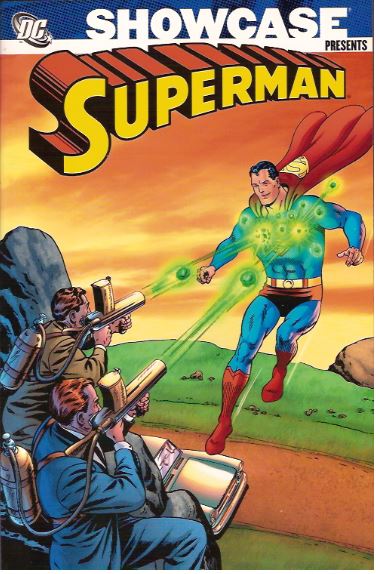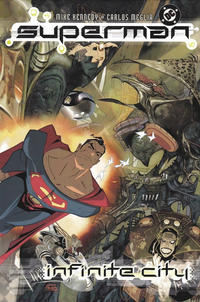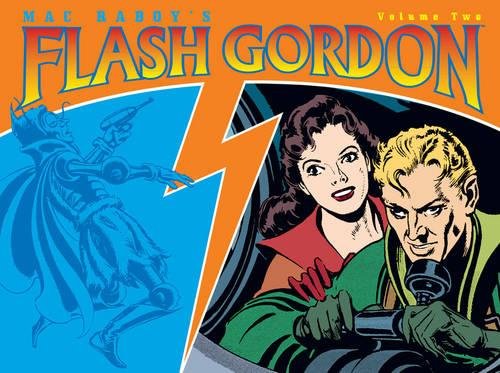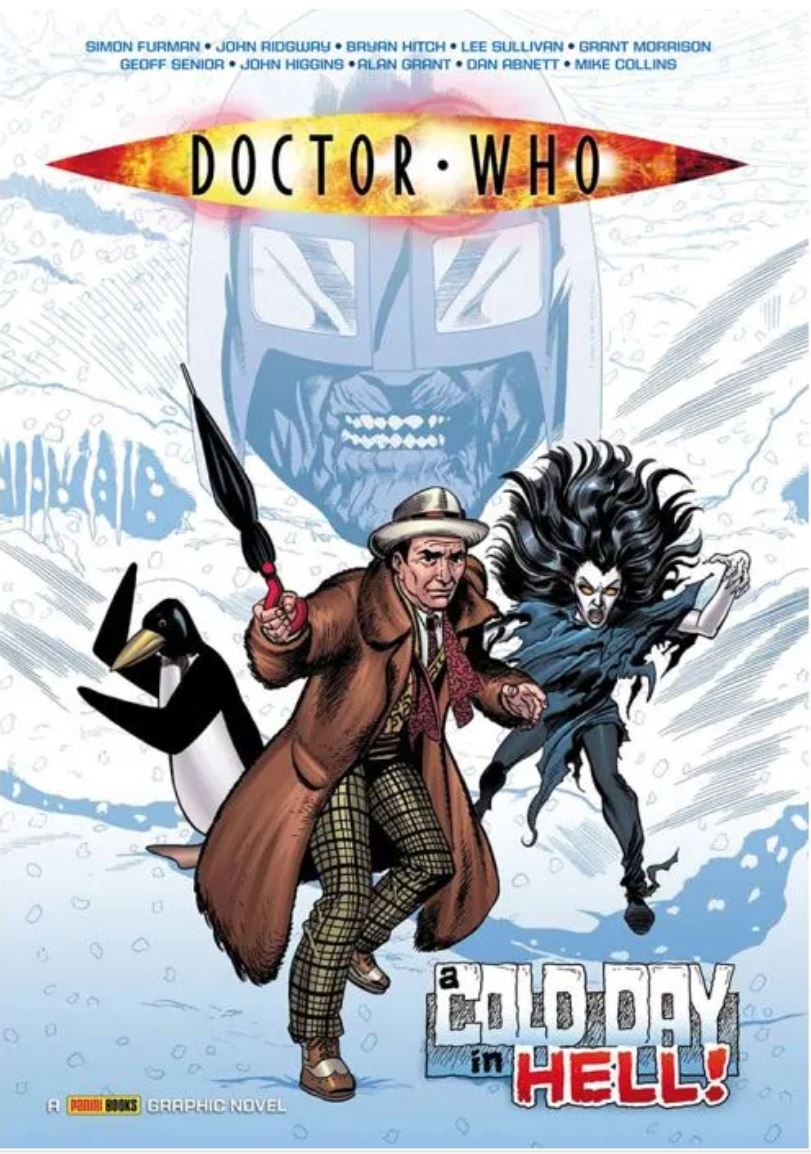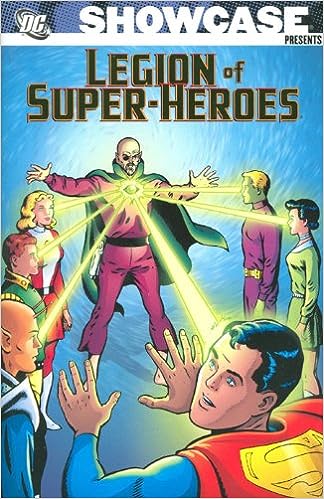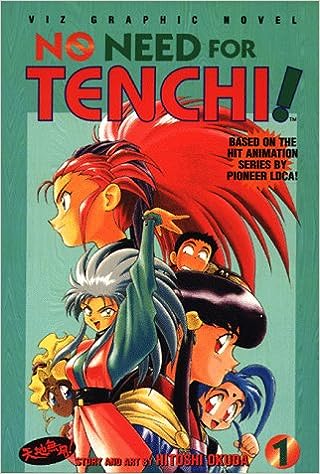
By Jamie Smart, with Sammy Borras (David Fickling Books)
ISBN: 978-1-78845-300-4 (Digest HB)
Bunny vs Monkey has been the hairy backbone of The Phoenix since the very first issue back in 2012: recounting a madcap vendetta gripping animal arch-enemies set amidst an idyllic arcadia masquerading as more-or-less mundane but critically endangered English woodlands.
Concocted with gleefully gentle mania by cartoonist, comics artist and novelist Jamie Smart (Fish Head Steve!; Looshkin; Max and Chaffy, Flember), his trendsetting, mind-bending yarns have been wisely retooled as graphic albums available in remastered, double-length digest editions such as this one.
All the tail-biting tension and animal argy-bargy began yonks ago after an obnoxious little beast plopped down in the wake of a disastrous British space shot. Crashlanding in Crinkle Woods – scant miles from his launch site – lab animal Monkey believed himself the rightful owner of a strange new world, despite all efforts from reasonable, sensible, genteel, contemplative forest resident Bunny to dissuade him. For all his patience, propriety and good breeding, the laid-back lepine could not contain or control the incorrigible idiot ape, who to this day remains a rude, noise-loving, chaos-creating, troublemaking lout…
Problems are exacerbated by other unconventional Crinkle creatures, particularly the skunk called Skunky who has a mad scientist’s intellect and attitude to life plus a propensity for building extremely dangerous robots, bio-beasts and sundry other super-weapons…
Here – with artistic assistance from design deputy Sammy Borras – the war of nerves and mega-ordnances resumes even though everybody thought all the battles had ended. They even seemingly forgot the ever-encroaching Hyoomanz…
Divided into seasonal outbursts, this magnificent hardback archive of insanity opens in the traditional manner: starting slowly with a sudden realisation. Probably by using his fingers, Monkey has worked out that Bunny’s side has more good guys (Ai, Pig Piggerton, Weenie, Metal E.V.E. and Le Fox) than his own bad ones! Wisely rejecting Skunky’s offer to make more evildoers, the sinisterly stupid simian seeks to steal some of Bunny’s buddies: making insidious individual approaches in ‘A Big Hole’.
One immediate success goes unnoticed as those worthy stalwarts debate ways to get hapless Pig out of a giant pit before finding the ‘Tunnels’ the sweet simpleton used to get there in the first place…
First contact and a really strange day for all – including a wholly new kind of Crinkle critter – occurs in ‘Jerb-eing Unreasonable’, before Monkey commits carnage in a psychic bodysuit that can literally ‘Imagine That’: opening the doors to another Spring. At this time a certain white rabbit is pilfering carrots from an angry Hyooman, only to be saved by Monkey in the colossal exo-skeletal ‘Spade-O-Matic’, officially opening hostilities between bipeds and beasts…
Meanwhile and maybe later, Bunny experiences ‘Mossy Mayhem’ when Skunky’s latest experiment escapes, even as Metal E.V.E ponders astral reality and rashly asks her friend to explain ‘Pig Science’…
As monkey demands 25% more evil from his crew, he’s distracted by Metal Steve’s latest faux pas – a doomed relationship with ‘Wipey’ – and ‘Sun 2.0’ renders repercussions of Skunky upgrading the source of all light and warmth. Action Beaver is then subject to a ‘Body Swap’ after Monkey covets his apparent immunity to pain and harm. It doesn’t end well…
Once the Great Woodland Bake-off inevitably culminates in ‘Cakes and Bruises’ Monkey use a superstrength serum unwisely. As his bones mend he has a Damascus moment: deducing that being a ‘Good Monkey’ might be less harmful. He gives nobility a go… but it too doesn’t end well…
A fresh face materialises when Pig meets ‘The Visitor’ and inadvertently saves Lucky the Red Panda from atomic discorporation. Sadly, the effect is only temporary and when their memories merge, Lucky is stuck in residence in this dimension with our plucky porcine adrift in the molecular stream of the cosmos…
Trapped on Earth, the stranger tries desperately to convince all and sundry she is ‘Actually Pig’, often assisted by typical distractions like marauding sprout-farting monster ‘Gruntulak!’ and a no-holds-barred campaign to elect ‘President Monkey’.
Skunky starts disassembling woodland residents: harvesting DNA to make endless duplicates in ‘All A-Clone’ but even Skunky’s science can’t handle Lucky…
As Summer starts, mad science wins again. Skunky sets a trap to prove Lucky is ‘Not Pig’ and even finds what happened to the lost one, after which Monkey manages to murder cloud-gazing in ‘Weather or Not’ and Weenie gets a shocking letter in ‘Blackmail’…
With the truth about to out, ‘Pocket Pig’ sees the gentle woodland folk form a torch-waving mob to establish their real friend’s fate, only to find Skunky has already found a way to exploit the situation. However, when he constructs a device to reach the outer realms, Monkey makes a shambles of the ‘Portal Recall’…
When the awful anthropoid gets a mail-order giant robotic Chicken of Darkness, he never anticipated some assembly required and the woods are saved by ‘A Loose Nobble’, allowing good manners and better natures to resurface. Thus, the animals all contribute to ‘Lucky’s Home’: especially Monkey with his goop gun and crushing space-sphere of doom…
Elsewhere, as Metal Steve and Metal E.V.E hold a private contest to decide the best automaton in ‘Who Will Win the War of the Robots’, Skunky’s clumsiness triggers a crop of carnivorous blooms in ‘Chomp!’ Then, as Monkey’s alter ego “Captain Explosives” accidentally uncovers a crop of chronal crystals in ‘Time and Again’ Skunky makes his greatest breakthrough: a remote control for existence with a ‘Freeze Frame’ able to warp and rewind reality…
With everything on pause, ‘The Second Pigging’ heralds the return of a lost friend whose voyage to the cosmos has resulted in Complete Spiritual Enlightenment and manifestation as a Non-Corporeal Vision. Sadly, when nobody cheers, the ultimate Pig pops off in a dudgeon, leaving Lucky to save the day and restore time in ‘Hairy Nearly’: a major turning point that upsets many participants…
In what passes for a return to normality, Monkey is possessed by the ghost of a chicken and triggers an invasion of ‘Zombies!’ just as Autumn begins with Skunky and Monkey unleashing a giant robot that is ‘Turtle-y Ridiculous’…
Former good guy Fantastic Le Fox is also possessed and offers ‘A Warning’ of failure and worse that Monkey immediately reacts badly too, even as transcendent Pig returns to make contact with and elevate ‘Prophet Beaver’. Of course, nobody listens…
Meanwhile, Monkey has been messing with elemental forces and turned the woods into an ‘Expressionistic’ nightmare, before losing patience and challenging Bunny to a duel of ‘Brain Power’. After winning by cheating, the ape learns a painful lesson that is only the beginning of his woes as ‘Double Bunny’ sees a doppelganger emerge who will change the status quo in appalling ways…
Lost and distraught Bunny undertakes a mission for Skunky into the bowels of the earth in search of ‘Long-Lost Flopsy’. Guess how that ends…
The drama intensifies as ‘The Impossible Pig’ returns to reality only to discover that being ‘Disappointingly Mortal’ would be better than life as a power battery for Skunky, and that’s when ‘Lucky’s Fortune’ turns the tide…
Bunny has not been right since meeting the other rabbit and with Metal E.V.E.’s aid ‘The Search is On’ for a boon companion. Only briefly interrupted by realty running wild, the search resumes in ‘Better Luck Next Time!’ and Le Fox’s niece arrives for some rowdy ‘Fennec Fun!’ She’s on the run and another relation isn’t far behind her…
Solitude has bitten our hero hard and nothing Monkey can do will distract ‘A Lonely Bunny’ in his morose meanderings, so the little meany challenges Impossible Pig instead, and learns real suffering in ‘Butt Then…’
When Winter arrives, Lucky sees snow for the first time, enduring cheeky hostiles chucking chilly snowballs until the wonder-pig volunteers as ‘Protector’ and is soon tricked by Skunky who wants to depower the self-promoting saviour ‘At All Costs’…
Now resolved to return to the Molecular Stream, Impossible Pig takes advice from unknowable factor Le Fox, but stumbles into a wild Christmas Party on his way to the fabulous Lake of Eternity. He also meets Lucky who wants to leave this reality just as much, but as they argue over who should take the one-way ride a dear friend and desolate hero is already ‘Jumping the Queue’…
To Be Continued…
The agonised anxiety-addled animal anarchy might have ended for now, but there’s a few more secrets to share, thanks to detailed instructions on ‘How to Draw Lucky’ as well as a handy preview of other treats and wonders available in The Phoenix to wind down from all that angsty furore…
The zany zenith of absurdist adventure, Bunny vs Monkey is weird wit, brilliant invention, potent sentiment and superb cartooning all crammed into one eccentrically excellent package. These tails never fail to deliver jubilant joy for grown-ups of every vintage, even those who claim they only get it for their kids. This is the kind of comic book parents beg kids to read to them. Shouldn’t that be you?
Text and illustrations © Fumboo Ltd. 2023. All rights reserved.
Bunny vs Monkey book 8: The Impossible Pig! will be published on September 28th 2023 and is available for pre-order now.

